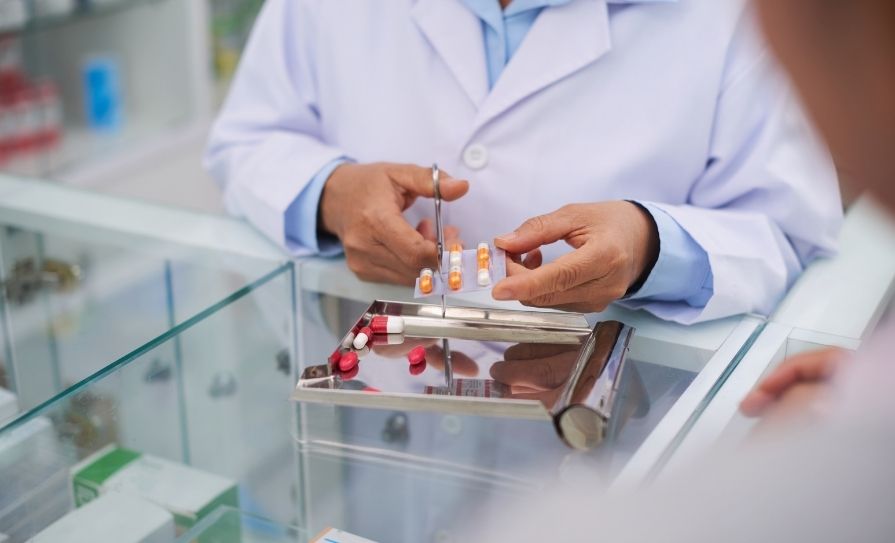Dr Des Corrigan looks at the evidence for and against capsaicin for pain relief
The heat I am referring to comes from capsaicin, the pungent chemical from chilli peppers. The fact that we call them ‘peppers’ is down to Christopher Columbus and his merry men who, when they reached the Americas and first came across these fruits, named them after black pepper — with which they were already familiar — due to their hot spicy taste.
There is no capsaicin, which comes from the Latin botanical name C.annuum, in what we call
red and green peppers — called bell peppers or simply capsicums in most other countries. Other varieties of this particular species do contain capsaicin and other capsaicinoids and are thus hotter, ie, cayenne and jalapeño peppers. The related species C.frutescens (tabasco and piri-piri) has much hotter chillies and C.chinense produces the hottest chillies of all, including the naga, habanero, and scotch bonnet varieties.
Aficionados vie fiercely with one another to breed the hottest varieties possible. The level of heat, not to mention the intensely painful burning sensation, is a badge of pride and usually expressed as Scoville Heat Units (SHU), named after the American pharmacist who invented the measurement.
Traditionally, SHUs are measured by how much an extract needs to be diluted so that it is undetectable according to a taste panel. Nowadays, quantitative HPLC (high performance liquid chromatography) is used to measure total capsaicinoid content expressed as capsaicin, on the basis that pure capsaicin has an SHU of 16 million.
According to the Guinness Book of Records, the hottest chilli pepper is called Pepper X, with an SHU of 2.69 million, followed by the Carolina Reaper at 2.2 million, the Trinidad Scorpion (1.46 million), and the Naga Viper from Bangladesh (1.38 million). Contrast those values with the (relatively) measly 50,000 SHU for cayenne chillies and 100,000 SHU for the piri-piri variety.
The painful burning sensation that can be caused by chillies, all too familiar to many, is due to the binding of capsaicin to TRVP1 (transient receptor potential cation channel subfamily V member1), the receptor that causes perception of pain and a burning sensation.
However, repeated exposure to capsaicin gives rise to a long-lasting ‘defunctualisation’ or persistent desensitisation of the receptor, with a subsequent lack of pain perception. It is this property that has attracted medical attention for many years, originally in cases of post-herpetic neuralgia (PHN) associated with shingles.
A Cochrane Review in 2017 looked at the topical use of products containing high concentrations of capsaicin for chronic neuropathic pain in adults. It advised that patches with 8 per cent capsaicin must be applied to the skin under local anaesthetic because of the intense burning sensation caused. Of the eight randomised controlled trials (RCTs) involving 2,488 participants included in the review, two used a placebo control, while the remainder used a 0.04% capsaicin topical product as an active placebo. Four of the studies included patients with PHN.
After 12 weeks, 10 per cent more participants reported being much or very much improved compared
to those on the active placebo. Two studies included patients with painful HIV-related neuropathy. In the treatment group, 27 per cent reported that they were much or very much improved compared to 10 per cent on the active placebo.
There was one trial in patients with peripheral diabetic neuropathy in which 10 per cent more participants reported being much or very much improved. While no serious adverse drug reactions were recorded, local effects such as redness, burning, or pain were common. The trials were of moderate or very low quality, according to the reviewers.
In 2023, a more recent systematic review in Pain Management looked at four trials with patches containing 8 per cent capsaicin as well as six RCTs involving either cream or gel formulations in the management of painful diabetic neuropathy. The patches were found to significantly reduce symptoms and improve sleep quality, with a 33 per cent reduction in symptoms after an hour. A cream containing 0.75% capsaicin reduced pain after two weeks but not at week eight, whereas a 0.025% gel gave no reduction in pain.
Over the years, efforts have been made to extend the medicinal use of capsaicin to other conditions. In 2018, the journal Osteoarthritis and Cartilage carried a meta-analysis of RCTs investigating the relative efficacy of capsaicin and non-steroidal anti-inflammatory drugs (NSAIDs) in osteoarthritis. None of the 17 RCTs included a direct comparison between topical NSAIDs and capsaicin. No significant difference in pain relief was seen between topical NSAIDs and capsaicin, with the latter being statistically superior to placebo.
When used as licensed, effect size calculations favoured capsaicin. The authors suggested that a decision about which to prescribe “should be guided by patient preference, safety, costs, and subsequent individual patient response”. Guidelines from the Osteoarthritis Research Society International and the European League against Rheumatism recommend both equally.
A more recent systematic review and meta-analysis of trials examining the efficacy and safety of topical capsaicin in osteoarthritis treatment appeared in Phytotherapy Research (2024). The evaluation included eight RC Ts with 498 patients. The meta- analysis showed that, compared to placebo, capsaicin in concentrations
Over the years, efforts have been made to extend the medicinal use of capsaicin to other conditions
ranging from 0.0125-5% may reduce pain severity as measured with a visual analogue scale. However, the review identified a number of issues with the trials, such as short study periods and small sample sizes resulting in low to very low certainty of the evidence, with the consequent statement that more work was needed.
Capsaicin should not be considered a one-trick pony, as many studies point to its potential in atherosclerosis, metabolic syndrome, and diabetes. A 2024 article in Drug Research reviewed the role of capsaicin in the prevention and treatment of various cancers. It inhibits growth of different types of tumours and induces apoptosis in such cells. An RCT regarding its use for prostate cancer patients is underway in Canada, and combinations of capsaicin and chemotherapy are also under investigation.
The molecule also shows promise in some neurological conditions, especially in animal models of stroke. One RCT of patients with stroke-related dysphagia involved a comparison of capsaicin in tomato juice with a technique called transcutaneous sensory electrical stimulation, and the response rate was higher with capsaicin.
According to a 2022 paper in Molecules, nebulised capsaicin enhanced coughing and sputum excretion in patients who had suffered a haemorrhagic stroke. Meanwhile, capsaicin jelly (0.1%) reduced the severity of migraine and cluster headaches as did an intranasal product but in a small number of patients.
As Joe E Brown’s character famously observes at the end of comedy film classic Some Like it Hot, “nobody’s perfect” and that certainly applies to capsaicin. However, it, and the peppers that produce it, have exciting medical applications as opposed to being solely of interest to culinary sado-masochists.
Dr Des Corrigan, Best Contribution in Pharmacy Award (winner), GSK Medical Media Awards 2014, is an Adjunct Associate Professor at the School of Pharmacy and Pharmaceutical Sciences at TCD where he was previously Director and won the Lifetime Achievement Award at the 2009 Pharmacist Awards. He was chair of the Government’s National Advisory Committee on Drugs from 2000 to 2011, having previously chaired the Scientific and Risk Assessment Committees at the EU’s Drugs Agency in Lisbon. He chaired the Advisory Subcommittee on Herbal Medicines and was a member of the Advisory Committee on Human Medicines at the HPRA from 2007 to 2024. He has been a National Expert on Committee 13B (Phytochemistry) at the European Pharmacopoeia in Strasbourg and served on the editorial boards of a number of scientific journals on herbal medicine.







